This article was medically reviewed by Luba Lee, FNP-BC, MS. Luba Lee, FNP-BC is a Board-Certified Family Nurse Practitioner (FNP) and educator in Tennessee with over a decade of clinical experience. Luba has certifications in Pediatric Advanced Life Support (PALS), Emergency Medicine, Advanced Cardiac Life Support (ACLS), Team Building, and Critical Care Nursing. She received her Master of Science in Nursing (MSN) from the University of Tennessee in 2006.
There are 12 references cited in this article, which can be found at the bottom of the page.
wikiHow marks an article as reader-approved once it receives enough positive feedback. This article received 13 testimonials and 87% of readers who voted found it helpful, earning it our reader-approved status.
This article has been viewed 485,578 times.
Cortisol is a hormone that is naturally produced in the adrenal glands. Cortisol helps control metabolism, regulates blood pressure and promotes proper function of the immune system, so it's important to maintain healthy cortisol levels in your body. A cortisol deficiency is serious condition that may be an indication that your adrenal glands aren't functioning properly. See This article will help you learn how to raise your cortisol production to a healthy level.
Steps
Signs of Low Cortisol
-
1See if you have symptoms of cortisol deficiency. Many people worry about having too much cortisol, since elevated levels of cortisol can lead to weight gain, fatigue, and more serious symptoms. But having too little cortisol can be just as harmful to your health. If your adrenal glands are damaged or if you have adrenal fatigue syndrome, your body might not be producing a sufficient amount of cortisol to properly regulate your blood pressure and immune system. Here are common symptoms of cortisol deficiency:[1]
- Weight loss and low appetite
- Low blood pressure
- Fainting
- Fatigue
- Low levels of energy even when rested
- Vomiting, nausea and gastrointestinal pain
- Salt cravings
- Hyperpigmentation (dark spots on the skin)
- Muscle weakness or pain
- Irritability and depression
- Heart palpitations
- Lack of enthusiasm
- For women, body hair loss and decreased libido
-
2Get your cortisol levels tested. If you suspect your cortisol levels are low, make an appointment with your doctor to schedule a cortisol test. A cortisol test involves having your blood drawn and sent to a lab to check cortisol levels. Cortisol levels are usually highest in the morning and lower in the afternoon and evening, and in some cases your doctor might decide to test you twice in the same day to compare morning and afternoon levels. Your doctor will be able to determine whether you have low cortisol or Addison's disease by comparing your levels to normal cortisol levels.[2]
- There are several ways of testing cortisol including saliva, blood, and urine tests. Additionally, your doctor may test for other hormones like TSH, free T3, T4, total thyroxine, DHEA, and 17-HP, which can be precursors to cortisol.[3]
- The "normal" range varies from lab to lab, but in general, the average morning level for an adult or child is 5–23 micrograms per deciliter (mcg/dL), or 138–635 nanomoles per liter (nmol/L). The average afternoon level for an adult or child is 3–16 mcg/dL or 83–441 nmol/L.[4]
- Be sure to get your cortisol levels tested by a physician, rather than using an at-home method. Saliva testing kits advertised online are not as reliable as blood tests analyzed by a lab.
- There are a variety of factors that can affect the efficacy of the test, so you may have to get your levels checked more than once. For example, if you're stressed, pregnant, on certain medications, or if you exercised right before the test, that could affect the level of cortisol in your blood.[5]
Advertisement -
3Determine why your levels are low. Once your doctor has confirmed that your cortisol is low, the next step is to figure out what's affecting your adrenal gland's cortisol production. The treatment your doctor recommends will be in large part determined by the source of the problem.
- Primal adrenal insufficiency, or Addison's disease, is when your adrenal gland isn't functioning properly to produce cortisol because it is damaged. This can be caused by autoimmune disease, tuberculosis, infection of the adrenal glands, cancer in the adrenal glands, or bleeding into the adrenal glands.
- Secondary adrenal insufficiency occurs when the pituitary gland, which produces a hormone that stimulates the adrenal glands, is diseased. The adrenal glands may be fine, but since they aren't being properly stimulated by the pituitary, they don't produce enough cortisol. Secondary adrenal insufficiency can also happen when people taking corticosteroids abruptly stop taking them.[6]
Medical Treatments
-
1Start by living a healthy lifestyle. The first step towards getting your cortisol levels balanced and on track is to live in a healthy way. This may include anything from modifying your sleep patterns to changing your diet. Some ways to live a healthy lifestyle and start improving your cortisol include:
- Avoiding stress
- Going to bed and waking up at the same time every day, even on weekends
- Avoiding caffeine and alcohol
- Exercising
- Practicing yoga, meditation, and positive visualization
- Eating avocados, fatty fish, nuts, olive oil, and coconut oil
- Avoiding sugar, processed food, and microwavable foods
-
2Take cortisol replacement therapy medication. The most common way that western-medicine doctors treat cortisol deficiency is through hormone replacement therapy. If your cortisol levels are low enough to need synthetic replacements, your doctor will prescribe oral corticosteroids, such as hydrocortisone, prednisone or cortisone acetate. Taking your prescription in tablet form every day will raise your cortisone production.[7]
- You will need to regularly test your cortisol levels during hormone replacement therapy to make sure you don't have too much or too little cortisol in your body.
- Oral corticosteroids have many different side effects; they can cause weight gain, mood swings, and other unpleasant symptoms. Talk with your doctor about things you can do to mitigate the side effects.[8]
-
3Ask your doctor about cortisol injections. If your cortisol levels are very low, getting into a stressful situation can be dangerous for you. Cortisol helps the body respond to stress, and without it, it's possible for the body to go into a coma. Your doctor may teach you how to administer your own cortisol injections in case of an emergency. When a stressful situation arises, you'll give yourself an injection of cortisol so that your body can adequately handle the crisis without shutting down.[9]
-
4Get treatment for the underlying problem. Hormone replacement therapy corrects the symptom, but not the underlying problem that's preventing your body from producing enough cortisol. Talk with your doctor about treatment options that may help your adrenal glands function at full capacity again.[10]
- If your adrenal glands have suffered irreversible damage, or if you have a permanent condition that will always cause your adrenal glands to be low-functioning, continued hormone replacement therapy may be the best option.
- However, if the cause of your cortisol deficiency is related to a secondary factor such as pituitary disease, cancer, tuberculosis, or bleeding, there may be a treatment option that will restore your body's capacity to produce adequate cortisol.
Natural Remedies
-
1Manage your stress. If your cortisol levels are low, but not low enough to require hormone replacement therapy, it's still important to keep your life as low-stress as possible. Learning to manage and reduce stress in your life will allow cortisol to gradually increase in your system instead of being produced all at once in high-pressure situations. The more stress you have, the faster your cortisol will get depleted.[11]
- Try stress management techniques like journal writing, yoga or meditation to teach your body to produce cortisol regularly and maintain healthy levels.
-
2Maintain a regular sleep schedule. The body naturally produces cortisol during the hours when you're sleeping. Get 6-to-8 hours of sleep per night and try to go to sleep around the same time each evening.
- Create a peaceful environment with no light or noise to get deep sleep and aid cortisol increase.
-
3Eat a balanced diet. Foods high sugar and refined flour can cause cortisol levels to spike or drop to unhealthy levels. Eat plenty of whole grains, fruits and vegetables to help raise cortisol levels to a healthy amount.[12]
-
4Eat grapefruit. Grapefruit and citrus break down enzymes that limit cortisol production. Adding grapefruit to your diet on a regular basis can help your adrenal glands boost cortisol production.[13]
-
5Try a licorice supplement. Licorice contains glycyrrhizin, which inhibits the enzyme in your body that breaks down cortisol. Inactivating this enzyme will help you gradually raise cortisol levels. Licorice is considered a very useful substance for boosting cortisol.[14]
- Look for licorice herb supplements in tablet or capsule form at a vitamin or health food and supplement store.
- Avoid using licorice candy as a supplement. It doesn't contain high enough amounts of glycyrrhizin to be useful.
-
6Eat high-iron food. This can help increase your energy if you are facing fatigue.
- Natural iron supplements can be taken if you need an increase in energy as well.
Expert Q&A
Did you know you can get expert answers for this article?
Unlock expert answers by supporting wikiHow
-
QuestionHow do I raise my cortisol levels when I have PTSD?
 Luba Lee, FNP-BC, MSLuba Lee, FNP-BC is a Board-Certified Family Nurse Practitioner (FNP) and educator in Tennessee with over a decade of clinical experience. Luba has certifications in Pediatric Advanced Life Support (PALS), Emergency Medicine, Advanced Cardiac Life Support (ACLS), Team Building, and Critical Care Nursing. She received her Master of Science in Nursing (MSN) from the University of Tennessee in 2006.
Luba Lee, FNP-BC, MSLuba Lee, FNP-BC is a Board-Certified Family Nurse Practitioner (FNP) and educator in Tennessee with over a decade of clinical experience. Luba has certifications in Pediatric Advanced Life Support (PALS), Emergency Medicine, Advanced Cardiac Life Support (ACLS), Team Building, and Critical Care Nursing. She received her Master of Science in Nursing (MSN) from the University of Tennessee in 2006.
Board-Certified Family Nurse Practitioner Post-traumatic stress disorder oftentimes has been associated with lower levels of cortisol and it might be related to initial high amounts of cortisol as a response to the stress in in the traumatic event but eventually adrenal glands are exhausted and struggle to maintain adequate levels of cortisol. In that way, low cortisol in the case of PTSD is similar to low cortisol levels as seen in adrenal fatigue disorder. To normalize cortisol back into balance you have to address both psychological and physiological domains as mind directly affects your body. Working with both a psychologist and a medical doctor as well as stress reduction, working through traumatic events in the group setting, employing mindfulness, exercise, anti-inflammatory diet, getting adequate rest and sleep can all help normalize your cortisol.
Post-traumatic stress disorder oftentimes has been associated with lower levels of cortisol and it might be related to initial high amounts of cortisol as a response to the stress in in the traumatic event but eventually adrenal glands are exhausted and struggle to maintain adequate levels of cortisol. In that way, low cortisol in the case of PTSD is similar to low cortisol levels as seen in adrenal fatigue disorder. To normalize cortisol back into balance you have to address both psychological and physiological domains as mind directly affects your body. Working with both a psychologist and a medical doctor as well as stress reduction, working through traumatic events in the group setting, employing mindfulness, exercise, anti-inflammatory diet, getting adequate rest and sleep can all help normalize your cortisol. -
QuestionI am a pituitary adenoma patient on oral hydrocortisone. I am due for surgery in a few weeks time, but my cortisol level as at today is 45mcg/dl. How do I get it to go up?
 Zora Degrandpre, NDDr. Zora Degrandpre is a Natural Health Doctor and Licensed Naturopathic Physician in Vancouver, Washington. She is a grant reviewer for the National Institutes of Health and the National Center for Complementary and Alternative Medicine. She received her ND from the National College of Natural Medicine in 2007.
Zora Degrandpre, NDDr. Zora Degrandpre is a Natural Health Doctor and Licensed Naturopathic Physician in Vancouver, Washington. She is a grant reviewer for the National Institutes of Health and the National Center for Complementary and Alternative Medicine. She received her ND from the National College of Natural Medicine in 2007.
Natural Health Doctor You don't say when that cortisol level was measured, but normal levels of cortisol are 7-28 mcg/dL in the morning and 2-18 mcg/dL in the afternoon. 45 mcg /dL is higher than normal. You should call your doctor, let them know what your cortisol level is, and ask them what the best approach would be for you before you go in for surgery.
You don't say when that cortisol level was measured, but normal levels of cortisol are 7-28 mcg/dL in the morning and 2-18 mcg/dL in the afternoon. 45 mcg /dL is higher than normal. You should call your doctor, let them know what your cortisol level is, and ask them what the best approach would be for you before you go in for surgery. -
QuestionDo floaters disappear after lowering my cortisol levels?
 Luba Lee, FNP-BC, MSLuba Lee, FNP-BC is a Board-Certified Family Nurse Practitioner (FNP) and educator in Tennessee with over a decade of clinical experience. Luba has certifications in Pediatric Advanced Life Support (PALS), Emergency Medicine, Advanced Cardiac Life Support (ACLS), Team Building, and Critical Care Nursing. She received her Master of Science in Nursing (MSN) from the University of Tennessee in 2006.
Luba Lee, FNP-BC, MSLuba Lee, FNP-BC is a Board-Certified Family Nurse Practitioner (FNP) and educator in Tennessee with over a decade of clinical experience. Luba has certifications in Pediatric Advanced Life Support (PALS), Emergency Medicine, Advanced Cardiac Life Support (ACLS), Team Building, and Critical Care Nursing. She received her Master of Science in Nursing (MSN) from the University of Tennessee in 2006.
Board-Certified Family Nurse Practitioner Eye floaters are very common and most are caused by age related changes and lowering your cortisol levels would not affect whether or not they disappear. However, if you suffer from adrenal fatigue and concerned about bringing your cortisol levels down by lowering your stress and inflammation, you may notice overall improvement in your health and therefore eye floaters might be somewhat less bothersome and chance of forming new ones might be reduced as well.
Eye floaters are very common and most are caused by age related changes and lowering your cortisol levels would not affect whether or not they disappear. However, if you suffer from adrenal fatigue and concerned about bringing your cortisol levels down by lowering your stress and inflammation, you may notice overall improvement in your health and therefore eye floaters might be somewhat less bothersome and chance of forming new ones might be reduced as well.
Warnings
- Check with your doctor or pharmacist before making any changes to your diet or taking any over-the-counter medications or supplements to help raise your cortisol levels. They will be able to verify that these additions will not interact with any other medication you're taking⧼thumbs_response⧽
- Licorice also lowers testosterone so don't overdose on it. It's all about balance.⧼thumbs_response⧽
References
- ↑ https://www.niddk.nih.gov/health-information/endocrine-diseases/adrenal-insufficiency-addisons-disease/symptoms-causes
- ↑ https://medlineplus.gov/lab-tests/cortisol-test/
- ↑ https://adrenalfatiguesolution.com/testing-for-adrenal-fatigue/
- ↑ http://www.webmd.com/a-to-z-guides/cortisol-14668?page=2
- ↑ http://www.webmd.com/a-to-z-guides/cortisol-14668?page=2
- ↑ https://www.hormone.org/diseases-and-conditions/adrenal-insufficiency
- ↑ https://www.mayoclinic.org/diseases-conditions/addisons-disease/diagnosis-treatment/drc-20350296
- ↑ https://medlineplus.gov/druginfo/meds/a682206.html
- ↑ http://www.mayoclinic.org/diseases-conditions/addisons-disease/basics/treatment/con-20021340
- ↑ https://www.niddk.nih.gov/health-information/endocrine-diseases/adrenal-insufficiency-addisons-disease/treatment
- ↑ https://www.mayoclinic.org/healthy-lifestyle/stress-management/in-depth/stress/art-20046037
- ↑ https://www.niddk.nih.gov/health-information/endocrine-diseases/adrenal-insufficiency-addisons-disease/eating-diet-nutrition
- ↑ http://www.ncbi.nlm.nih.gov/pubmed/21896619
- ↑ http://www.ncbi.nlm.nih.gov/pubmed/21896619
About This Article
To raise cortisol levels, avoid foods that are high in sugar and refined flour, which can cause cortisol levels to drop. Additionally, keep a regular sleep schedule since the body naturally produces cortisol while you sleep. If you're dealing with a lot of stress, try practicing yoga and meditation to help you relax since stressful situations deplete your cortisol levels. You can also try eating more grapefruit or taking a licorice supplement, both of which can boost your cortisol production. To learn how to medically treat your cortisol levels, keep reading!

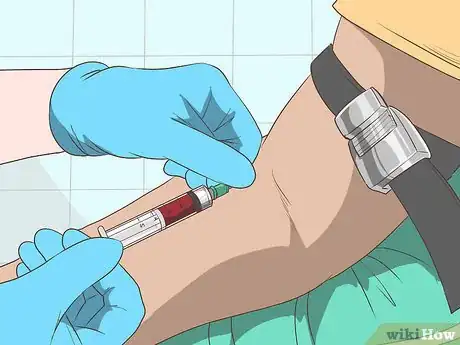


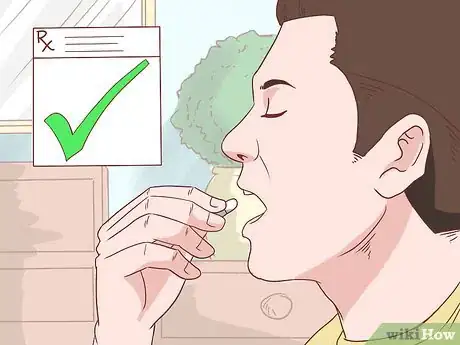
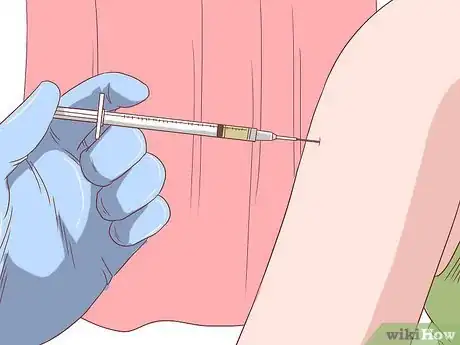
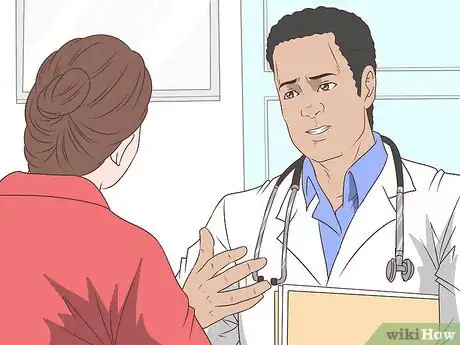

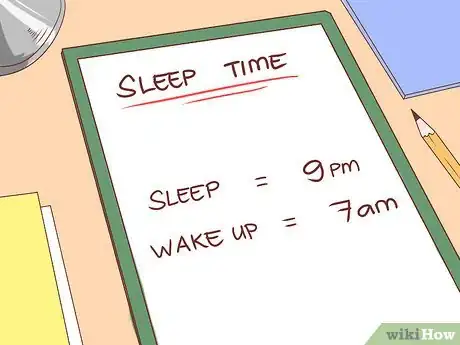

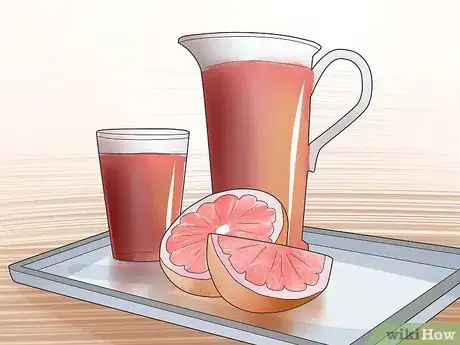
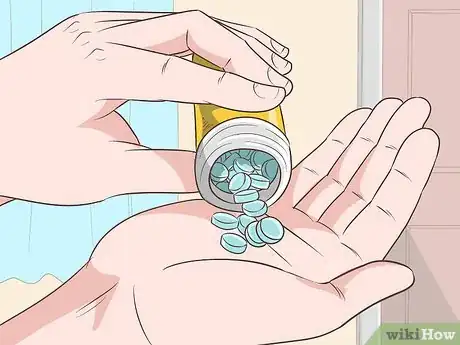


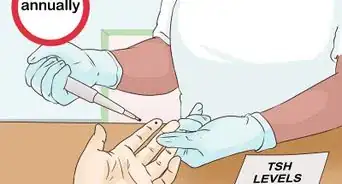
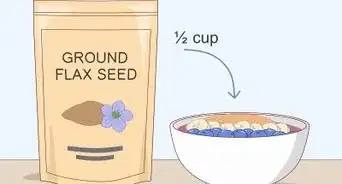









-Step-12-Version-2.webp)












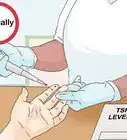
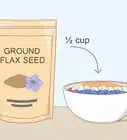




































Medical Disclaimer
The content of this article is not intended to be a substitute for professional medical advice, examination, diagnosis, or treatment. You should always contact your doctor or other qualified healthcare professional before starting, changing, or stopping any kind of health treatment.
Read More...